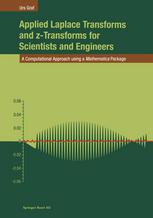

Most ebook files are in PDF format, so you can easily read them using various software such as Foxit Reader or directly on the Google Chrome browser.
Some ebook files are released by publishers in other formats such as .awz, .mobi, .epub, .fb2, etc. You may need to install specific software to read these formats on mobile/PC, such as Calibre.
Please read the tutorial at this link: https://ebookbell.com/faq
We offer FREE conversion to the popular formats you request; however, this may take some time. Therefore, right after payment, please email us, and we will try to provide the service as quickly as possible.
For some exceptional file formats or broken links (if any), please refrain from opening any disputes. Instead, email us first, and we will try to assist within a maximum of 6 hours.
EbookBell Team

4.7
16 reviewsThe theory of Laplace transformation is an important part of the mathematical background required for engineers, physicists and mathematicians. Laplace transformation methods provide easy and effective techniques for solving many problems arising in various fields of science and engineering, especially for solving differential equations. What the Laplace transformation does in the field of differential equations, the z-transformation achieves for difference equations. The two theories are parallel and have many analogies. Laplace and z transformations are also referred to as operational calculus, but this notion is also used in a more restricted sense to denote the operational calculus of Mikusinski. This book does not use the operational calculus of Mikusinski, whose approach is based on abstract algebra and is not readily accessible to engineers and scientists. The symbolic computation capability of Mathematica can now be used in favor of the Laplace and z-transformations. The first version of the Mathematica Package LaplaceAndzTransforrns developed by the author appeared ten years ago. The Package computes not only Laplace and z-transforms but also includes many routines from various domains of applications. Upon loading the Package, about one hundred and fifty new commands are added to the built-in commands of Mathematica. The code is placed in front of the already built-in code of Laplace and z-transformations of Mathematica so that built-in functions not covered by the Package remain available. The Package substantially enhances the Laplace and z-transformation facilities of Mathematica. The book is mainly designed for readers working in the field of applications.